IN THE WOODS AROUND NESACTIUM
Nesactium was an ancient city, situated on a hill about ten kilometers from where I live. Now is an archeological park surrounded by dense forest. None of this, however, is relevant to this post. You won't see the remains of Nesactium here, only some fungi I encountered in the woods around the regularly trimmed and well-kept archeological area.
Among the species that I found on this occasion, the smallest of them was the most cool-looking and photogenic. These minuscule fruiting bodies grew on one of the many rotting acorns scattered all around the forest floor.
For this photograph, I used all the magnifying power my macro lens can offer, so you can take a good look at all the anatomical features of one of those tiny mushrooms.
The name of the species is Hymenoscyphus fructigenus and the post is my contribution to FungiFriday by @ewkaw
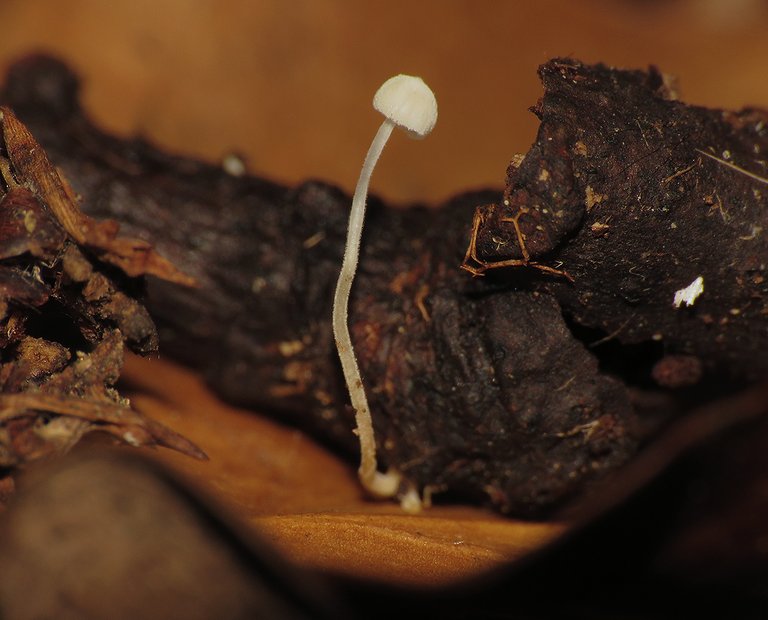
Not far from the tiny acorn mushrooms, I found a gracile elongated fruiting body attached to a rotting twig. In this case, I can't tell you the name of the species, but I'm pretty sure that this is one of the many tiny mushrooms from the genus Mycena in the Mycenaceae family. Mycena sacchariferae maybe. Or Mycena adscendens. Or some similar, closely related species.
A meter or two further, I photographed some slightly bigger small mushrooms. These were also attached to the fallen twigs.

These are the Marasmiellus candidus fruiting bodies. While I was sitting in the same place and exploring the ground around me in search of small fungi among the rotting wood and leaf litter ...
... something jumped on the wild asparagus plant behind my back.
When I turned around, I saw a fairly big bush cricket.
This is the Sepiana sepium, commonly known as the red-faced bush cricket.
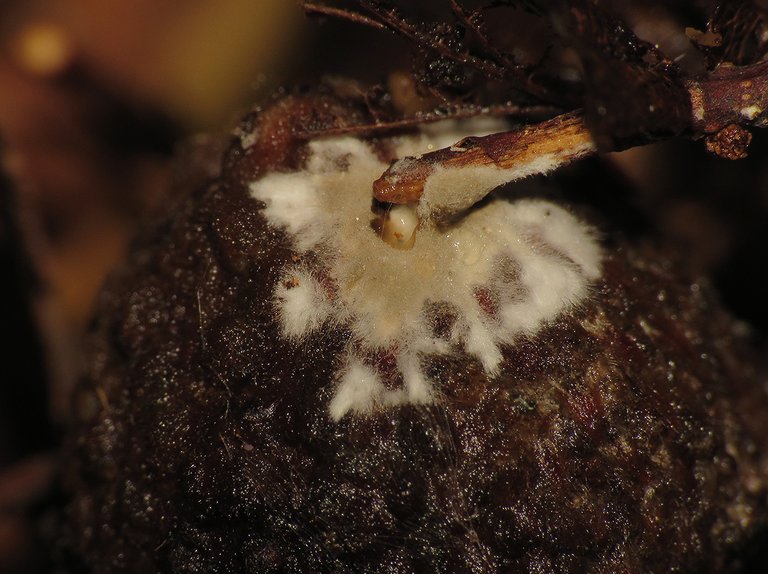
This white, fluffy fungal growth was found and photographed on the cap of one of the acorns on the ground around the Asparagus aculeatus plant. Can't tell you anything else about the fungal thing shown in this photograph.
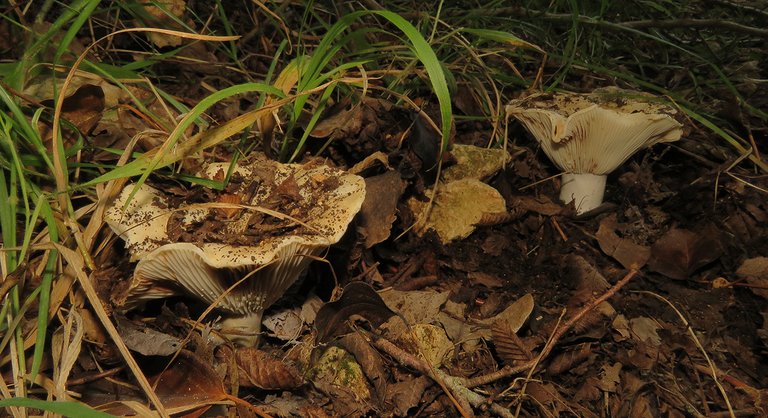
These large mushrooms grew very close to the narrow, stony road that leads through the woods. In the following photograph ...
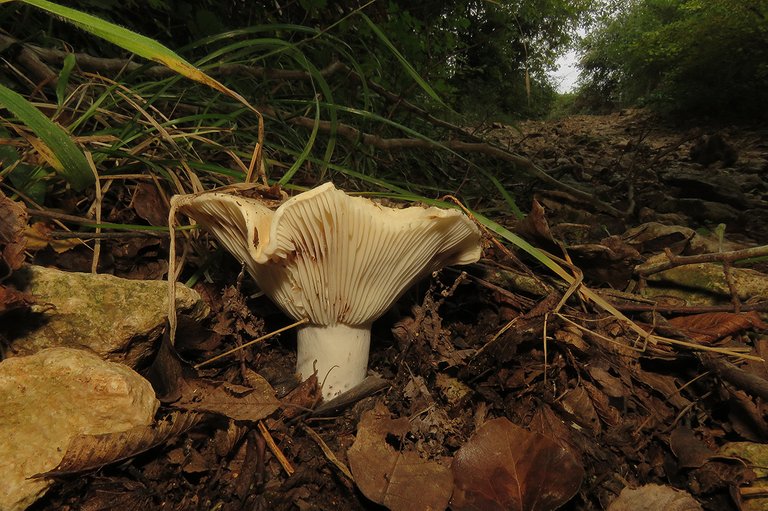
... you can see one of those mushrooms in the foreground and the road with a bit of scenery in the background. The name of the species is Russula delica.
These two fruiting bodies of a slightly different kind were photographed four or five meters from there, further from the road. These are the Russula ochroleuca mushrooms. Another meter or two further ...
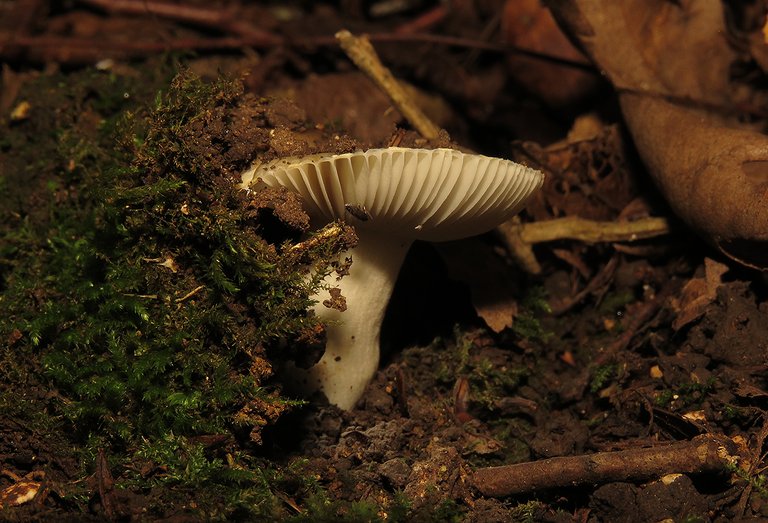
... I found another Russula of the same kind.
This Russula ochroleuca was partially hidden by the moss-covered soil. If you enlarge the following picture by clicking on it ...
... you may notice something small attached to the gills on the underside of the cap.
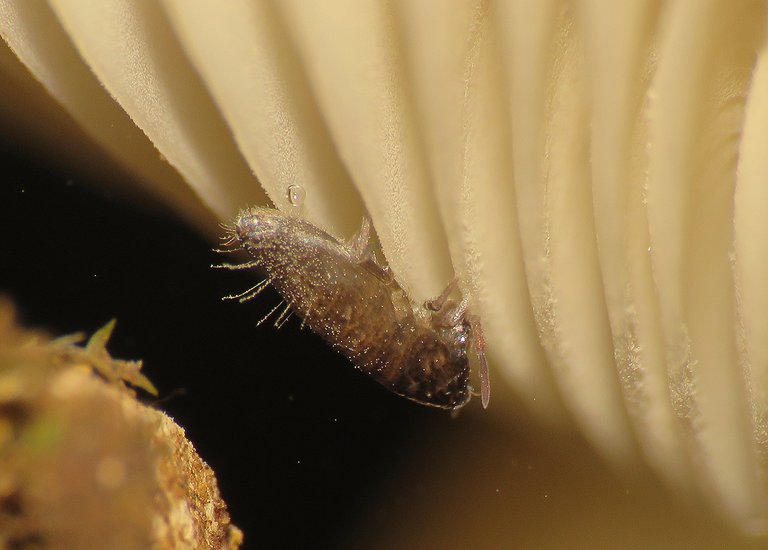
This photograph was taken through the macro lens. You can take a better, more up-close look at the creature.
It's a springtail. The Lepidocyrtus curvicolis. A very small arthropod but fairly big for a springtail.
After some more exploring and sniffing around that same area ...
... I came across a pretty spectacular group of mushrooms ...
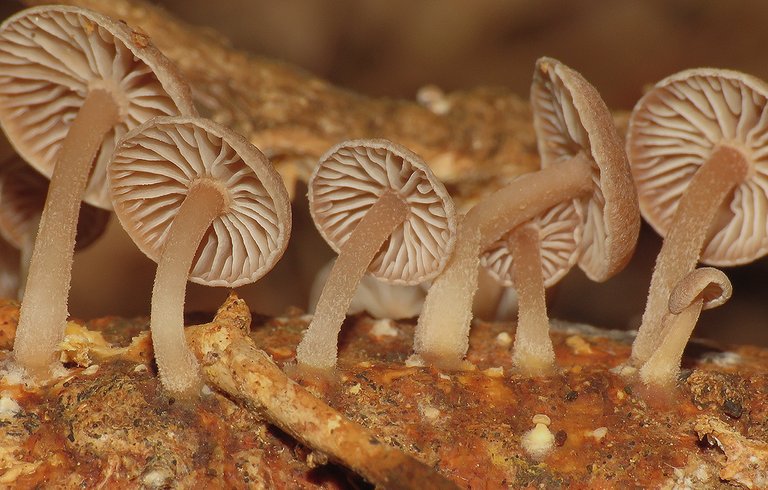
... that grew on one of the bigger, longer branches that were rotting down on the ground.
The piece of wood was densely covered with fruiting bodies.
Some of them were growing upside down.
I can't tell you the name of the species, but ...
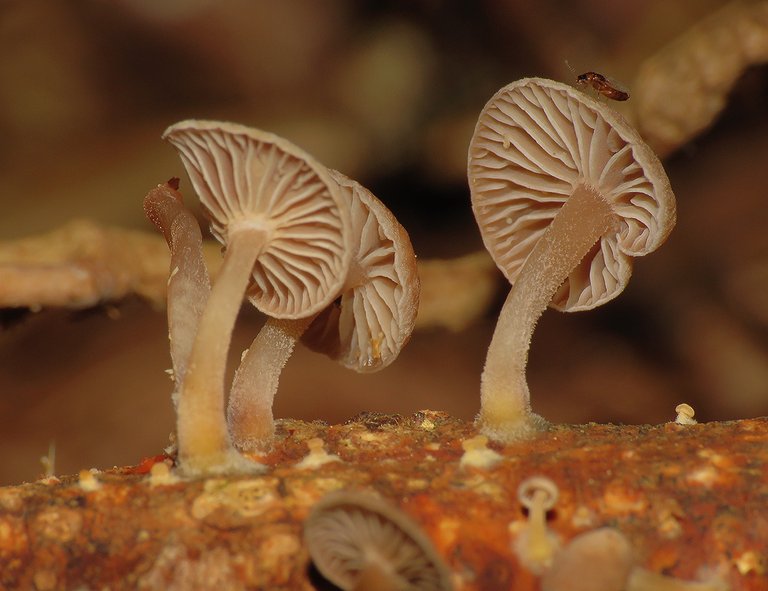
... but I'm pretty sure that these mushrooms belong to the genus Gymnopus of the Marasmiaceae family.
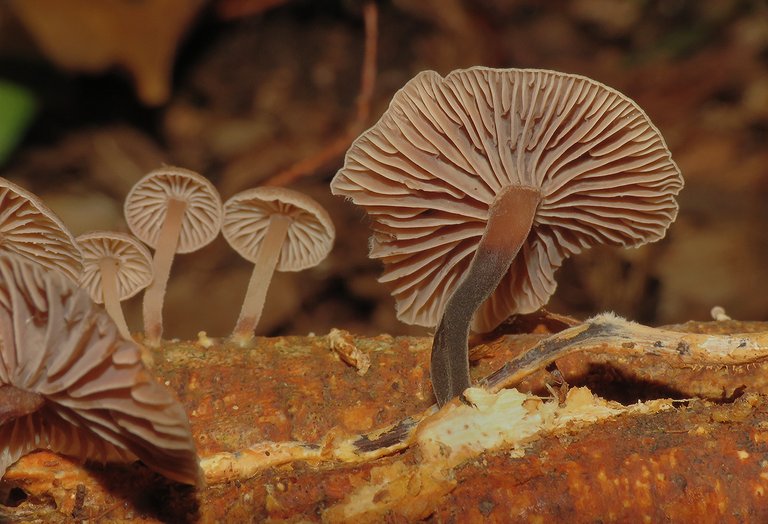
I spent almost an hour with these mushrooms ...
... and, as you can see, I took plenty of photographs. Some of them can be perceived as practically identical at first sight, but slightly different angles or lighting reveal different details and can bring a bit of change to the overall atmosphere. That's why I uploaded them all.
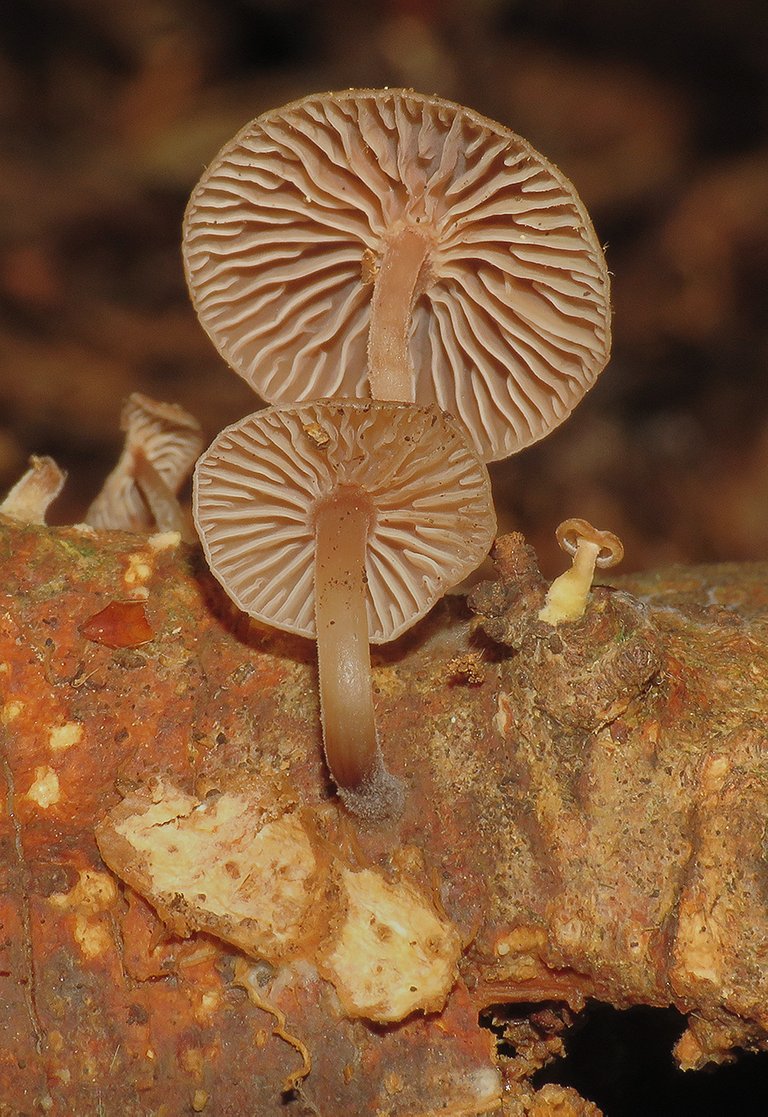
It was an inspiring encounter.
In the following photograph ...
... you can take a break from the mushroom & stuff rotting on the ground and rest your eyes on the vivid green color provided by the ivy, shrubs & trees.
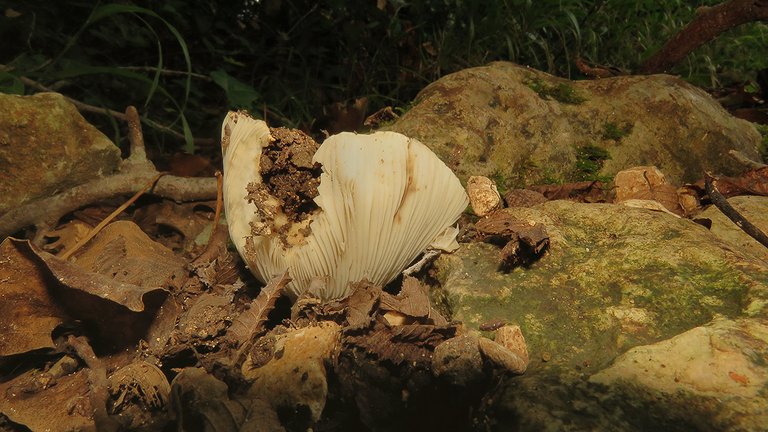
This mushroom grew among the stones ...
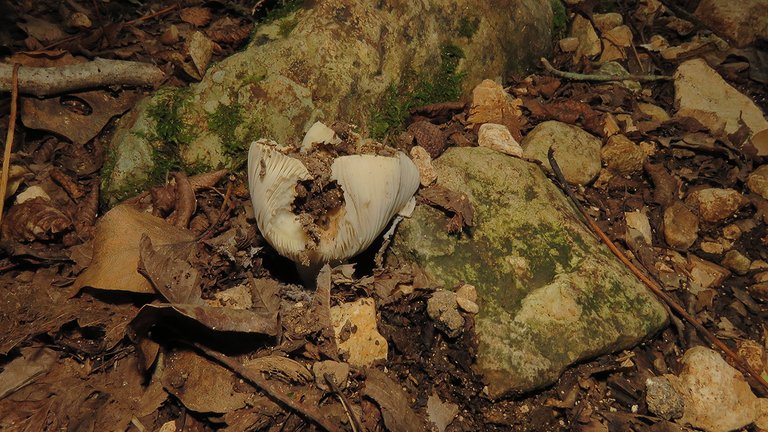
... in the middle of the road. It's nothing new. Just another Russula delica.
This thing was photographed on one of the stones at the edge of the road.
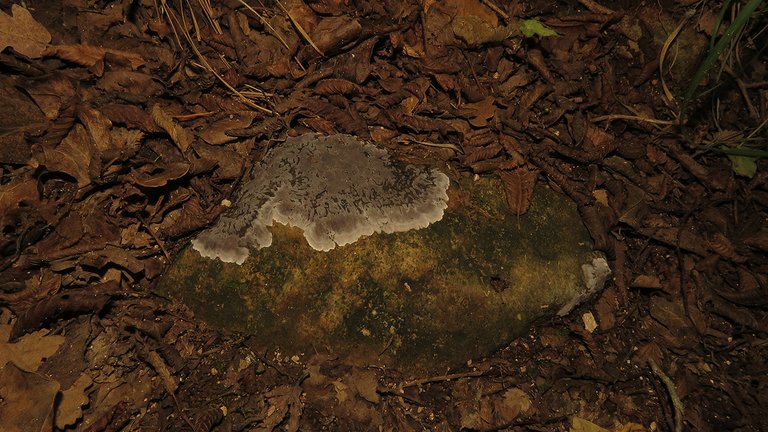
It looks like some kind of lichen ...
... but a look through the macro lens reveals spongy tissues that resemble fungal growth ...
... so I can't tell you what is this exactly.
Some unusual fungus that grows in the stone? Or some unusual spongy lichen that is like all lichens, also partially a fungus? Who knows, maybe I'll know the answer one day.
On one of the small green plants sparsely scattered in the middle of the road, I photographed this moth from the Crambidae family. Nomophila noctuella is the name of the species.
Ten or twenty meters from there, on the way back to the car, I found another mushroom. It looks like the Pluteus cervinus. I'm pretty sure about the species but I'm not completely sure.
Here you can see the top of the cap.

And that's it. This partially eaten Russula ochroleuca is the last mushroom I photographed today.
The following links will take you to the sites with more information about some of the protagonists of this post. I found some stuff about them there.
https://www.first-nature.com/fungi/russula-delica.php
https://www.mushroomexpert.com/pluteus_cervinus.html
http://www.pyrgus.de/Sepiana_sepium_en.html
https://www.first-nature.com/fungi/russula-ochroleuca.php
https://www.mushroomexpert.com/hymenoscyphus_fructigenus.html
https://en.wikipedia.org/wiki/Mycena
https://www.mushroomexpert.com/marasmiellus_candidus.html
https://en.wikipedia.org/wiki/Lepidocyrtus_curvicollis
AS ALWAYS IN THESE POSTS ON HIVE, THE PHOTOGRAPHS ARE MY WORK - THE END.
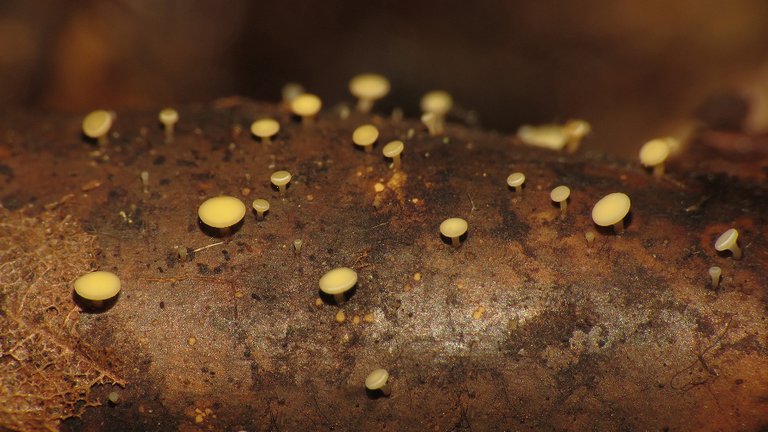
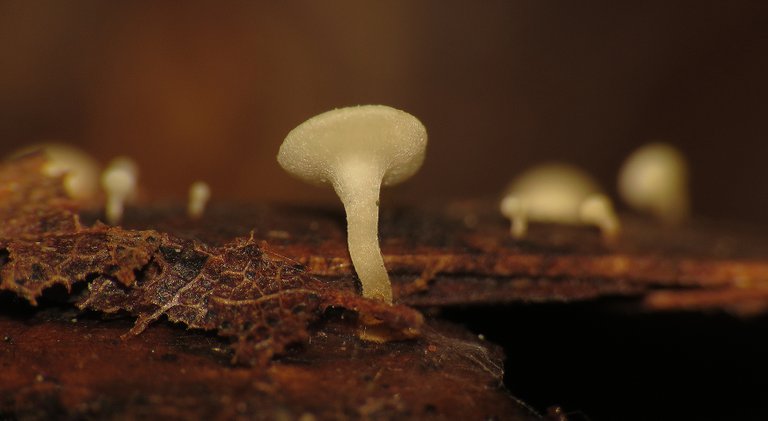
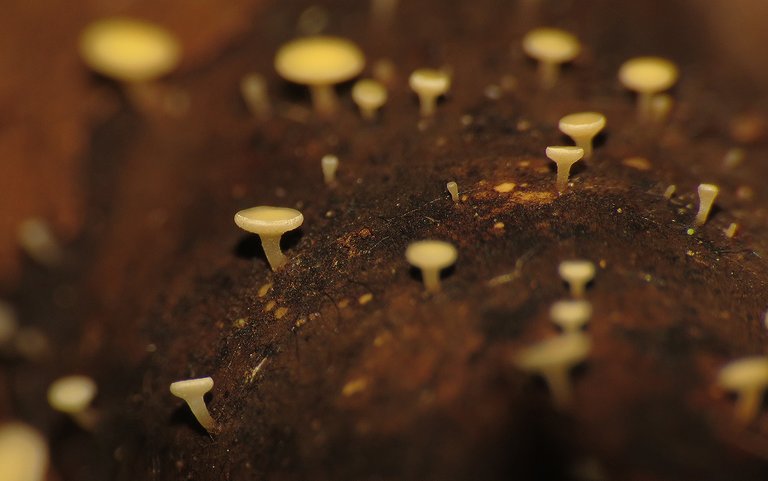

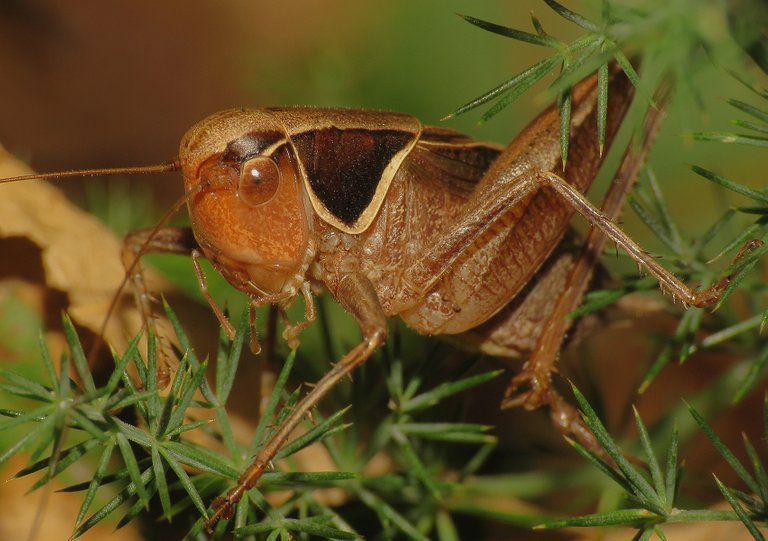
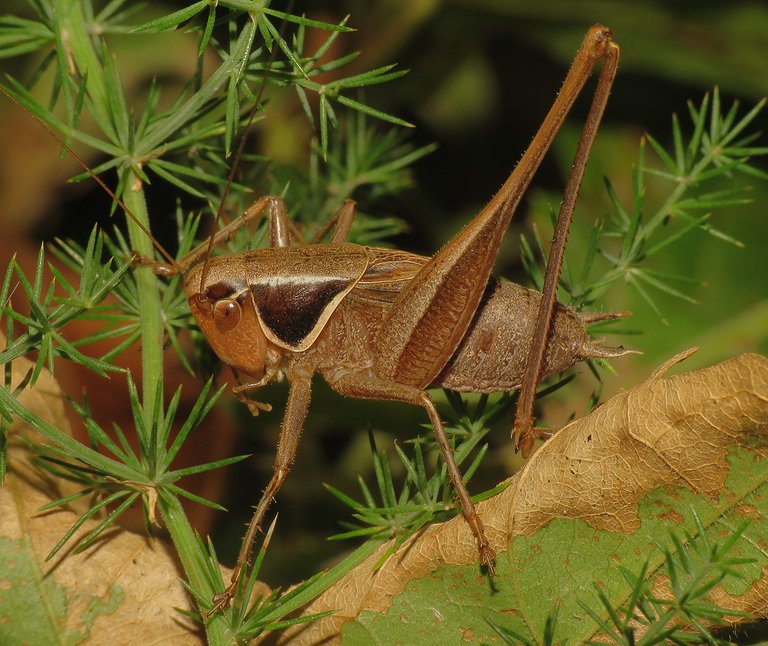
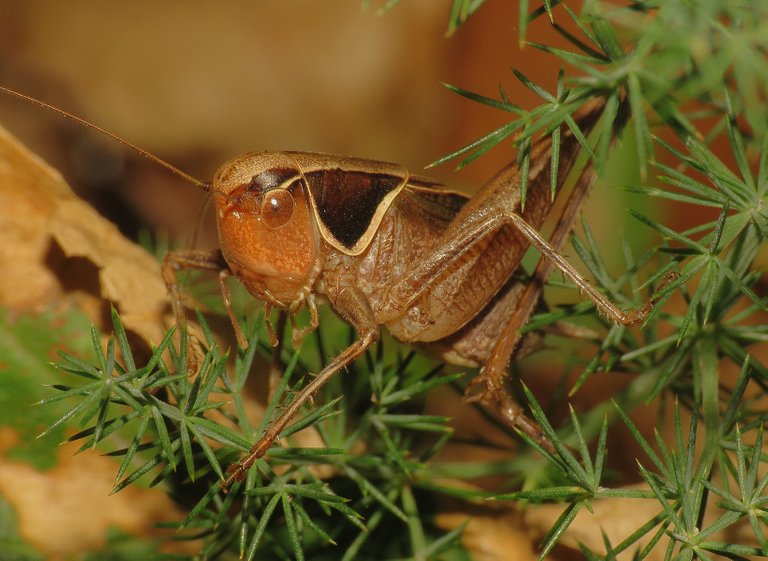
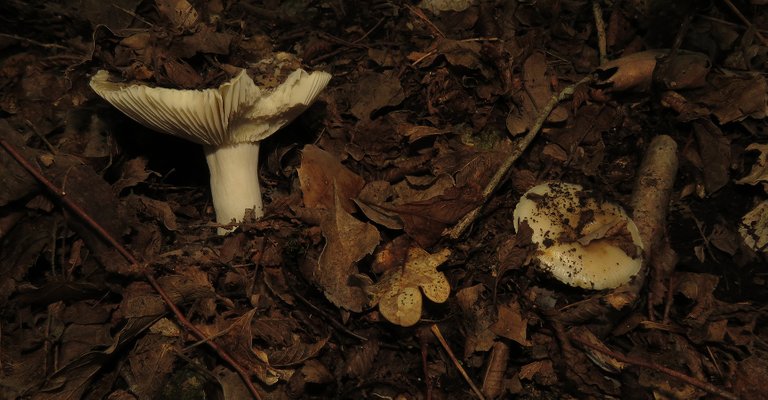
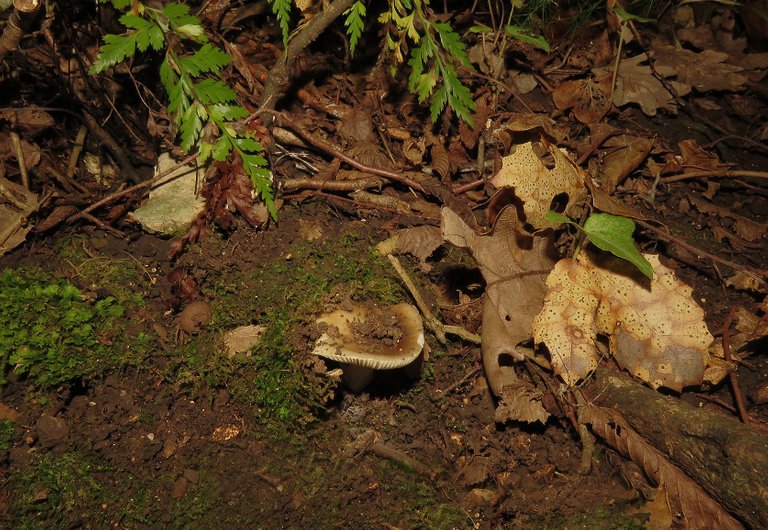
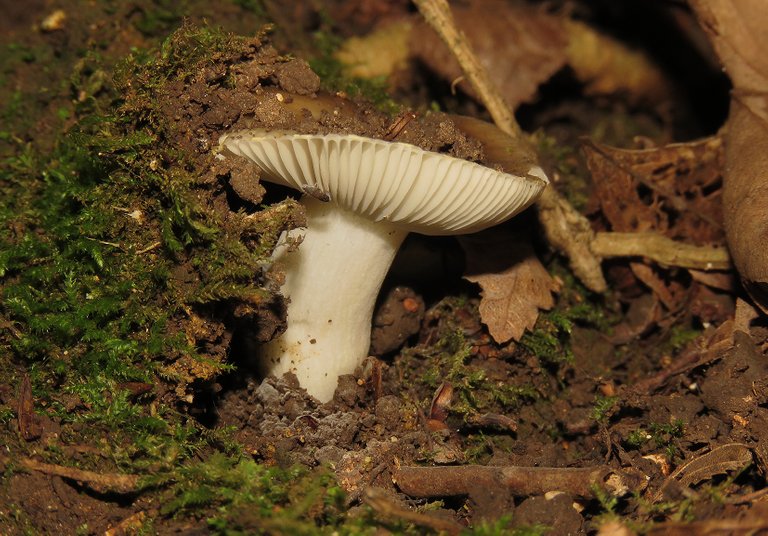
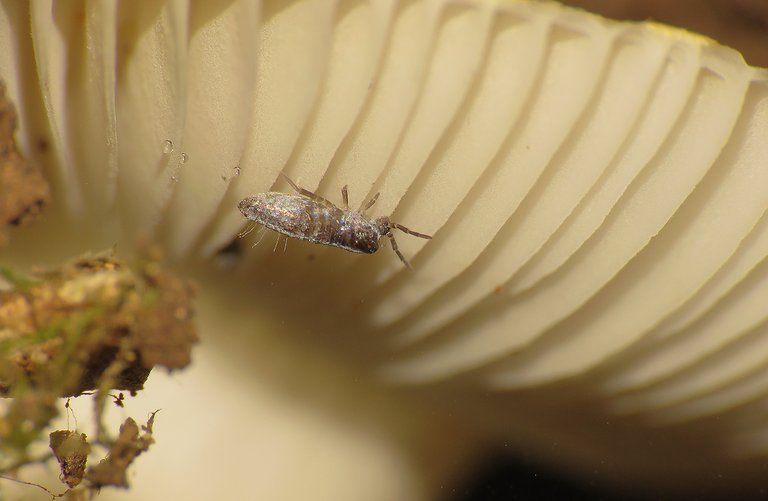
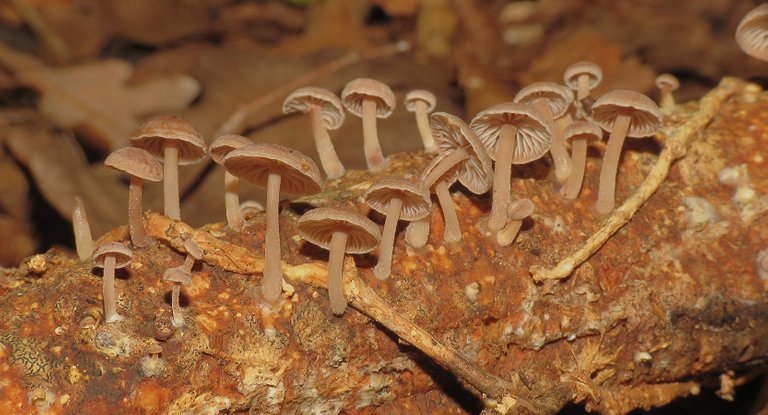

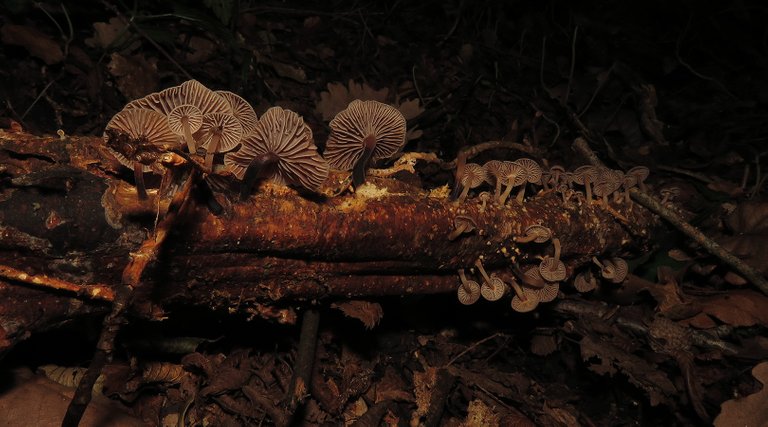
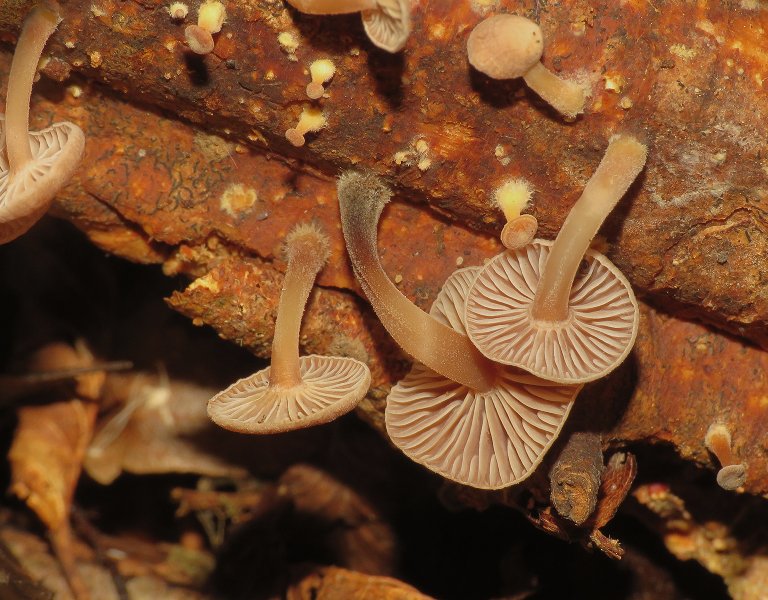
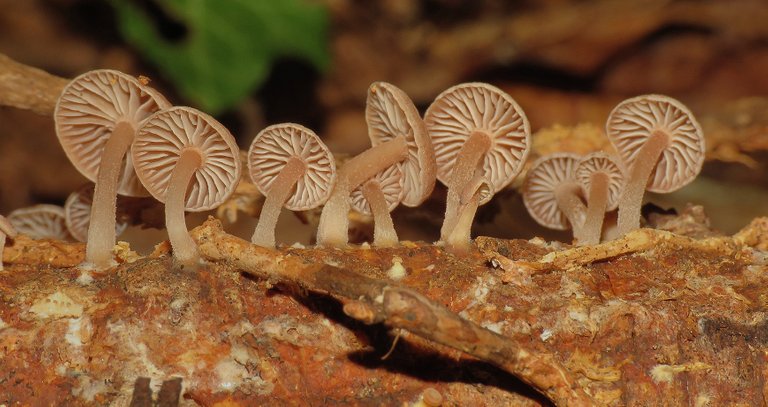
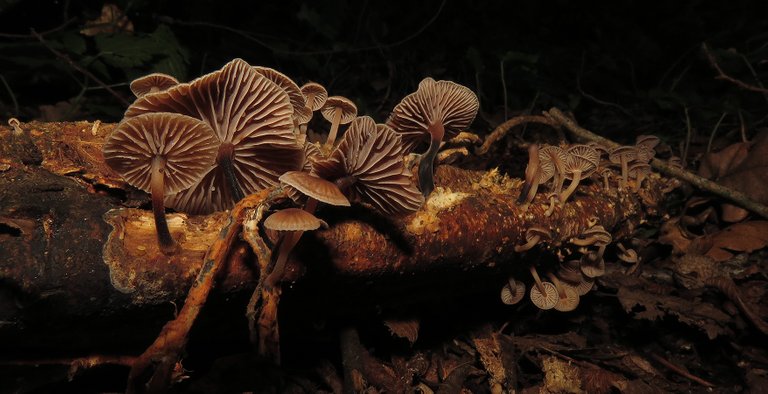

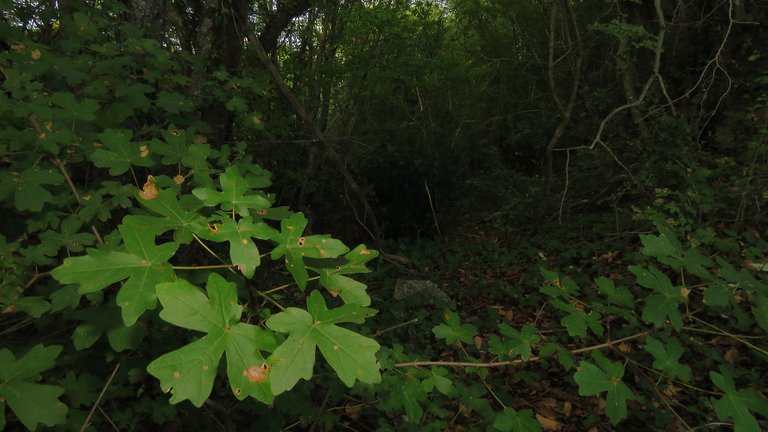
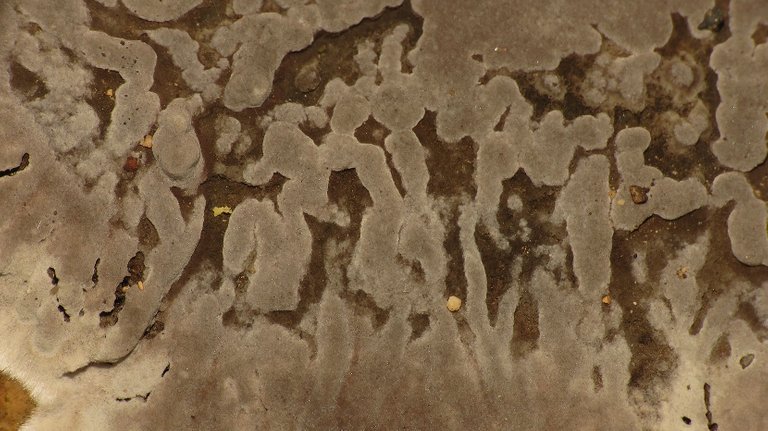
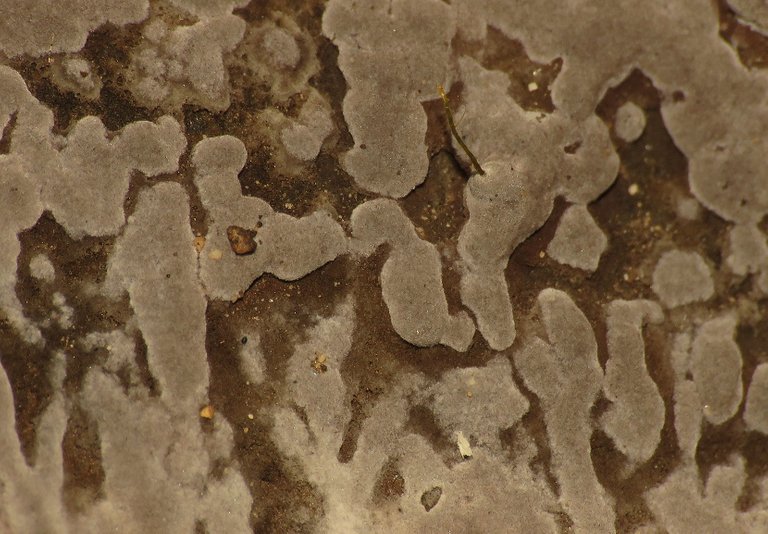
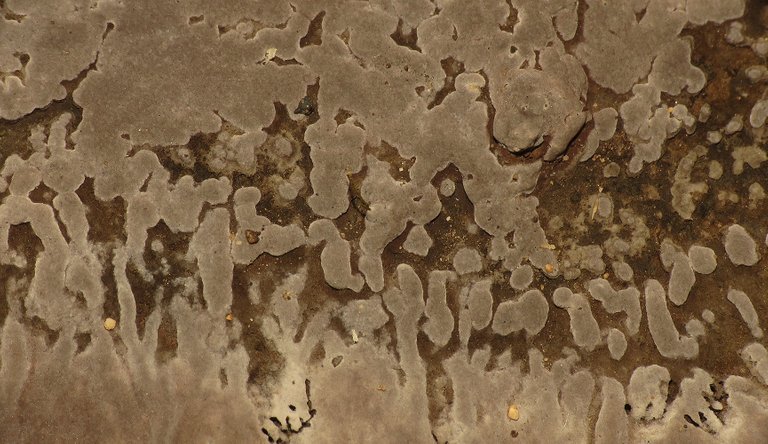
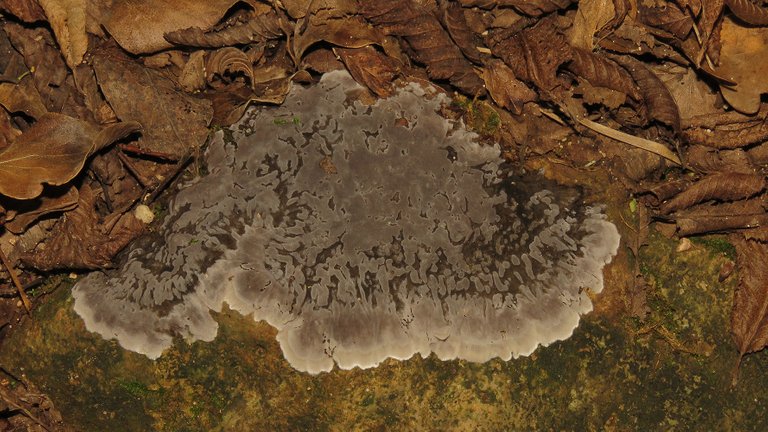
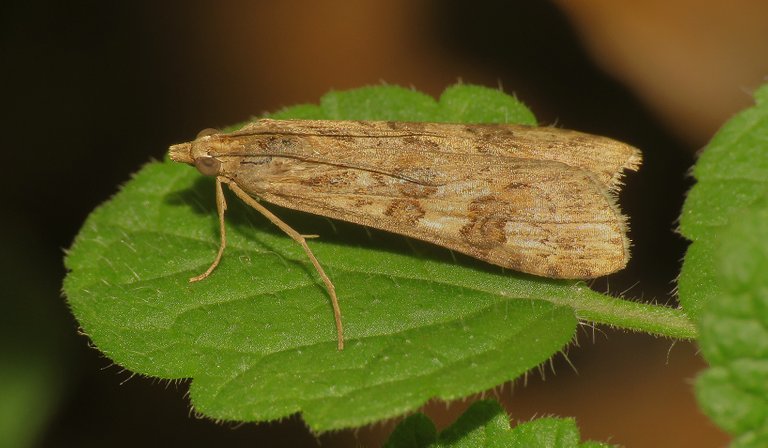
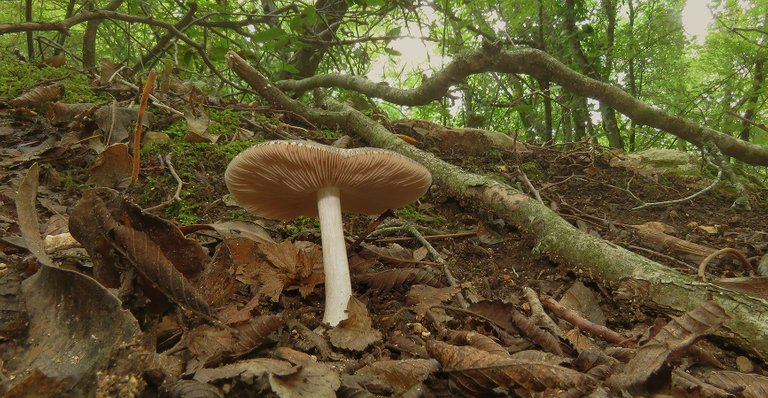
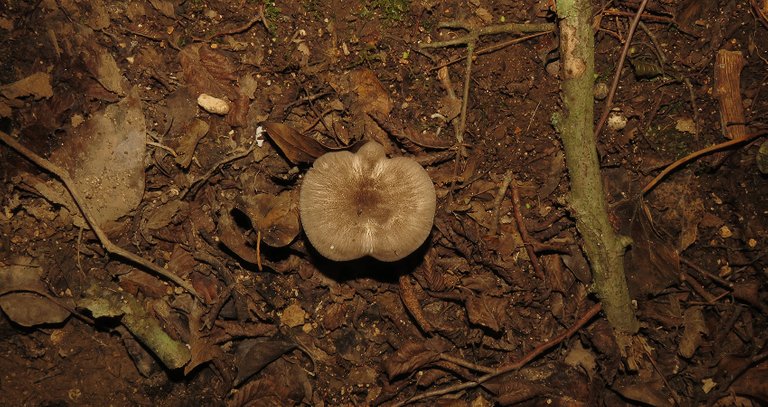
The first few photos with such pale coloured funfi seems to be those that usually grow in dark places. Maybe because we do not see them so often they are looking like on other planet. Cricket looks so huge with such details on close up pictures.
Without a doubt, nothing that we see in the post corresponds to the ruins :) Seriously, the mushrooms that you take several photos to show the differences, I see them, some are more open, others the opposite but the stems are the same, well not in dimension.
I wish you a happy weekend
Thank you 🙂Have a great weekend and the week that follows.
A hug 🙂
Perfect shot, I am always amazed by your work, success forever for you
Thank you 🙂
With pleasure sir, keep sharing your best posts, I will always make you as a motivator of mine in the hive, thank you very much sir
The world through the eyes of springtail, beautiful and intriguing.
@tipu curate 🌻
Upvoted 👌 (Mana: 32/42) Liquid rewards.
Nature lets itself be discovered, but sometimes we wonder how strange it can be, very beautiful images you have attached here.
Have a wonderful weekend.
Those are wonderful mushrooms photography. Looks so beautiful. And also some beautiful insect. Nicely captured
those mushroom are great topping for the !PIZZA
I should really go out into the woods next time to find some mushrooms. Beautiful photos and a collection of mushrooms my friend.
PIZZA Holders sent $PIZZA tips in this post's comments:
@ekavieka(3/5) tipped @borjan (x1)
You can now send $PIZZA tips in Discord via tip.cc!
The first picture I mean the tiny acorn mushrooms from above do look like golden coins.
So I guess that could relate to the ruins😂
As always great pictures and a nice post🤗❤️
This is very detailed search of varieties of fungi. I really admire your photography of different kinds of fungi and your presentation. Thanks so much.
Hi Borjan
The mycena is really cool, I love how it's stalk is so spindly leading up the umbrella. Your bush crickets are similar to the ones we find here, I don't think I have photos of them though.
What a great forest walk. Those Gymnopus are epically cool. Did you enjoy the outing, it must have been relaxing. I love the smell of forest floors.
I like that smell too. 😃 Especially in autumn.
the mushrooms are really amazing, the editing is very good I really like it
Cool mushrooms, you always show the best.
Those are the beauty of the nature. Thanks for sharing those beautiful shots.
!PGM 🐛
BUY AND STAKE THE PGM TO SEND A LOT OF TOKENS!
The tokens that the command sends are: 0.1 PGM-0.1 LVL-0.1 THGAMING-0.05 DEC-15 SBT-1 STARBITS-[0.00000001 BTC (SWAP.BTC) only if you have 2500 PGM in stake or more ]
5000 PGM IN STAKE = 2x rewards!
Discord
Support the curation account @ pgm-curator with a delegation 10 HP - 50 HP - 100 HP - 500 HP - 1000 HP
Get potential votes from @ pgm-curator by paying in PGM, here is a guide
I'm a bot, if you want a hand ask @ zottone444
Yay! 🤗
Your content has been boosted with Ecency Points, by @sketch.and.jam.
Use Ecency daily to boost your growth on platform!
Support Ecency
Vote for new Proposal
Delegate HP and earn more
This mushroom really caught my attention how today there is a new mushroom I am looking forward to mr. @borjan have a nice day